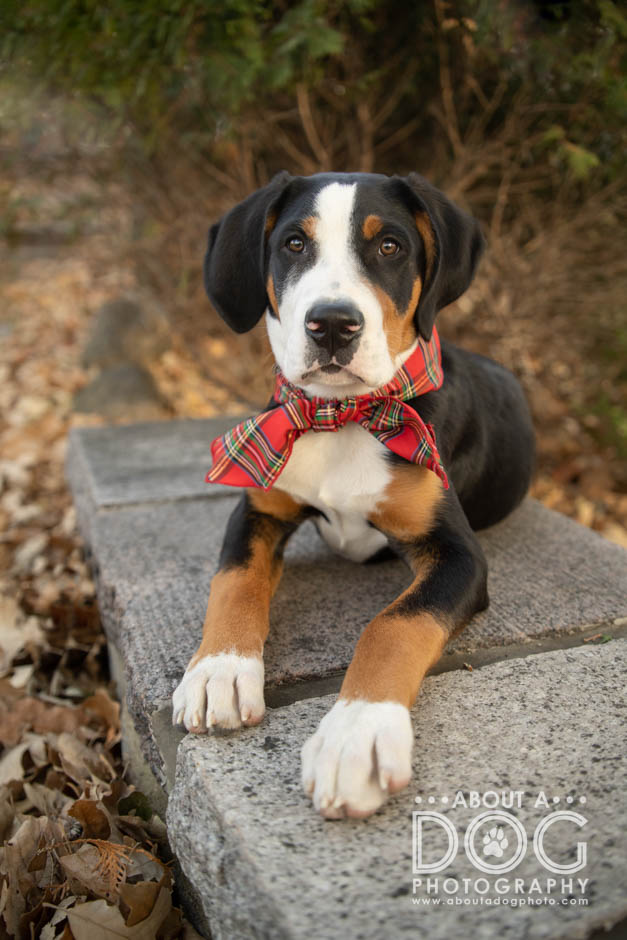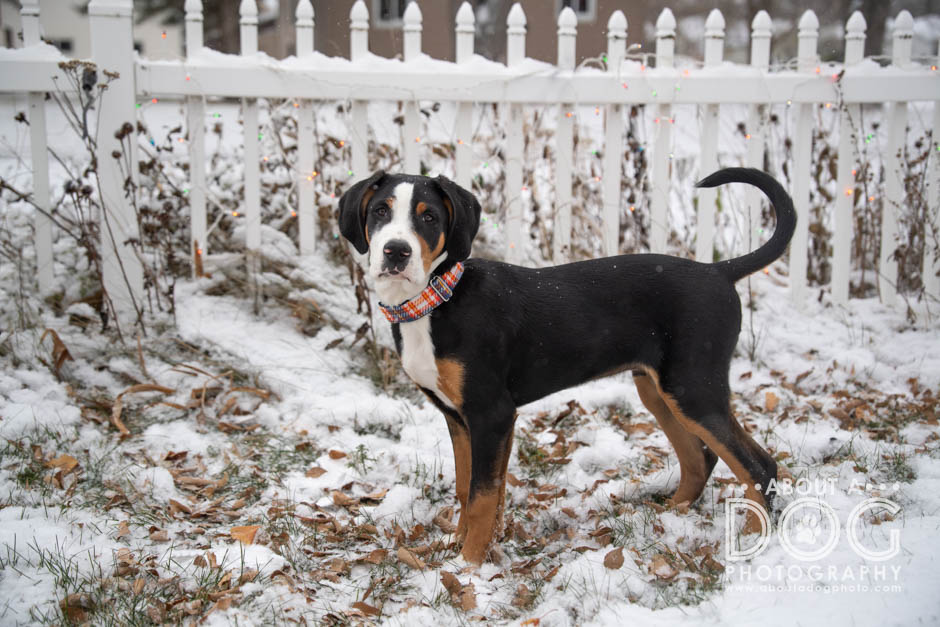Today, in the downtime between our food comas and frenzied Black Friday buying, let’s talk puppy safety this holiday season. For all puppies born after Christmas 2021 until now this will be their very first holiday season! Huzzah! This also means there will be tons of new experiences and things to explore with their mouths & teeth.

First let’s talk food. (Cue the holiday baking and the meal hosting.)
We all know the perils of onions, grapes and raisins, but did you know that the spice nutmeg is poisonous to dogs? If you use nutmeg in your cookie recipe don’t share a cookie with your puppy. If you want to share a cookie, leave out the nutmeg.
Here are helpful foods tips for your puppy (and dogs) this holiday season:
NUTS
- Pecans, black walnuts, hazelnuts and macadamia nuts are all toxic to dogs
- Avoid almonds as your pup’s digestive system can’t break them down well (but they aren’t toxic in case your pup snatches one)
- Pistachios aren’t toxic, but they can carry juglone, aspergillus mold, or mycotoxins that can cause liver failure. If you want to share one or two with your pup, make sure they are fresh and out of their shells.
- English walnuts (the type we classically eat), roasted cashews (no raw cashews for people or dogs!), Brazil nuts, pine nuts, roasted American chestnuts and peanuts are all SAFE for your pup in small amounts.
- Serve in small amounts as nuts are fatty and can cause tummy upset
SPICES
- Garlic (dried & powdered form especially), marjoram, allspice, nutmeg, Bay leaves, cocoa powder, onion powder, curry powder are all TOXIC to dogs. AVOID these!
- Cloves can be toxic in large amounts, but in a “whoops I dropped one on the floor” amount it won’t cause a problem
- Vanilla isn’t toxic, but the amount of alcohol used in extracts & flavorings can cause alcohol poisoning in dogs!
- Chili powder / spicy powders can cause upset & irritated gastrointestinal systems in dogs, though overall they are not toxic
HOLIDAY FOODS
- Turkey is ok for your pup to eat, avoid giving them bones & skin. Stick to white meat as it is less oily than dark meat.
- If you’re opting for traditional with a roast goose, or smaller with duck or chicken don’t fret, your dog can eat goose, duck & chicken!
- Ham is high in sugars and salts, but overall isn’t toxic for dogs. A very small amount of ham is ok, the whole slice is not.
- Avoid stuffing – most frequently they contain onion powder, garlic & other spices dogs can’t have!
- Limit fatty & oily foods (bacon, gravy, turkey skin) as they can cause pancreatitis (when the pancreas becomes inflamed causing vomiting & abdominal pain)
- Avoid large amounts of dairy as it can cause upset tummies – plus some dogs can’t process lactase well!
- If you’re making yeast breads, keep the dough away from your pup as the yeast can rise in their stomach! Once the bread or roll has been baked bread & rolls are safe for your pup to eat.
- Cookies & sweets should be avoided due to their sugar content (also their potential for nutmeg, cocoa or chocolate added in).
Good for your pup:
- Sweet potatoes & yams (plain, peeled & cooked), white potatoes with skin peeled off (mashed, chunked or whole ok!), pumpkin, squash, cucumbers, carrots, green beans, peas, celery, corn, leafy greens, cranberries, bananas and apples. Make sure there isn’t any added ingredients such as salt, pepper, butter, sugar or other spices.
- MODERATION is key!
If you are hosting guests, make sure they are aware of your table scrap rules and what your pup can or can’t have. Let them know the things your puppy CAN eat. That way when Grandma “sneaks” a snack to your pup there won’t be any tummy troubles or worse.

Once you’ve retired from the holiday table, consider the rest of the elements of the holiday season – decorations, lights & gifts! A first time experience for puppies! All the shiny, fluffy, dangly things, what fun!
Here are some safety points geared towards puppies (though will work for older dogs too!)
- Christmas tree. If your pup is a persistent pesterer of the tree and it’s decorations, create a barrier to limit how much your puppy can interact with the tree. Work on “leave it” training too! You may want to negate a tree skirt if your puppy thinks its a toy for him.
- Ornaments. Make sure all ornaments from nose reach to the floor are non breakable and in materials that are less enticing (ribbon & yarn elements). This may mean the bottom half of your tree is bare, but its a better option than your puppy eating the ornaments or yanking them and the tree down!
- Candy canes. The same rule as ornaments, hang them above where your puppy can reach with his nose. Sugar free candy canes contain Xylitol which is HIGHLY TOXIC to dogs. Avoid having sugar free candy canes (or any sugar free things like chewing gum) within your dog’s reach. Classic red and white peppermint candy canes won’t hurt your pup if he snatches one, but don’t let him eat the entire thing. Peppermint oil can cause tummy issues and can become toxic in large doses. Plus there’s a ton of sugar and the plastic wrapping the candy cane to be aware of. Or just skip candy canes on the tree so your pup doesn’t have any temptation.
- Strands of lights just beg to be chewed! Don’t let your pup chew them as they can get zapped if they chew through the wires! Plus there is a risk of them chewing off the bulbs – bulbs in your pup’s tummy can cause HUGE issues! Don’t wrap your puppy in a strand of lights for pictures (you’re merely asking them to chew the lights) and make sure to practice ample “leave its” when they encounter lights on the tree. Most lights for decoration will be high enough and out of reach, but if you have them lower as a backdrop pay attention to what your pup is munching on and work solidly on “leave its”.
- Gifts. Ah what other enticement is as an advertisement to “chew me” than the sharp corners of a crisply wrapped present? Perhaps the open topped fluffy tissue paper filled bag begging to be rooted through then torn apart. You don’t want your puppy tearing into other people presents (and having to rewrap everything) nor do you want your puppy eating all of the wrapping paper, boxes and things inside the gifts. “Leave it” training will come in handy, otherwise the barrier around the tree is going to be the safest place for gifts.
- Decorative figurines, candles, knick knacks. When decorating your surfaces remember to take into account how tall your puppy is and what surfaces they newly discover as they look up and around. Recently a pretty towel that had been hanging on a pipe shelf in the dining room for an eon was noticed by Blue. He grabbed the towel, gave a big yank and the shelf, sign, vase and knick knacks all went tumbling to the floor (nothing broken). He had walked past this towel since arriving home at 9 weeks… Just be aware that your puppy will be nosey especially when it comes to new things in places they didn’t notice before. Keep breakable things, candles, and essential oils up and out of the way. This rule goes for anything you don’t want your puppy to assume is a wonderful plaything.
- Tablecloths & table runners. If your table doesn’t usually have a table cloth, your pup might delight in the drapey, flowy material and find it to be a rather entertaining tug toy. Pending the size of your puppy, your tablecloth may end up completely removed and everything upon it upended. A table runner that hangs over the edges of the table makes for an equally exciting tug toy for your puppy. Work on “leave it”. If you find yourself getting after your pup frequently, either tuck up all the draping edges or remove the tablecloth.
- Flowers & plants. Nearly forgot to mention flowers & plants you may use for decorations or get as gifts. The classic poinsettia plant isn’t as deadly as we all have been told, though it tastes yucky to dogs and can cause nausea & vomiting. It would take a rather large amount of a poinsettia plant to be eaten before it becomes poisonous. Holly, mistletoe, lilies, daffodils and Amaryllis are all quite toxic to dogs (and cats too). Keep them well out of the reach of nosey puppies or skip them as decorations. If family & friends are going to gift you plants, request that they provide dog friendly plants (Christmas cactus anyone?).
** Reference Pet Poison Helpline for all sorts of poisonous plants!
Remember, this is the first holiday season for your puppy and there might be a lot of overwhelm from the hustle and bustle of friends, family, gift opening, food cooking and consuming. Make sure you have a safe, quiet place your puppy can go to chill and nap away from the hustle and bustle. Don’t forget frequent potty breaks. Take some time to go on a walk – not only will it get you out of the busyness of the house but a tired puppy is a chill puppy!
In summation: foods that are toxic for puppies, along with foods that are healthy. Tips for keeping your pup from eating the Christmas tree, the gifts beneath and the decorations & lights about the house.
These tips will help you have a safe holiday season with your puppy!
We are in a blog ring with other pet & dog photographers from around the world! Next up visit: Elaine Tweedy of I Got the Shot Photography in the Endless Mountains of Northeastern PA talks about pet safety tips for the holidays.

I love tbe way you categorized and divided up your tips. Great post, Cahlean!
Who knew there were so many holiday puppy-appealing dangers! Thanks for a great, comprehensive list.